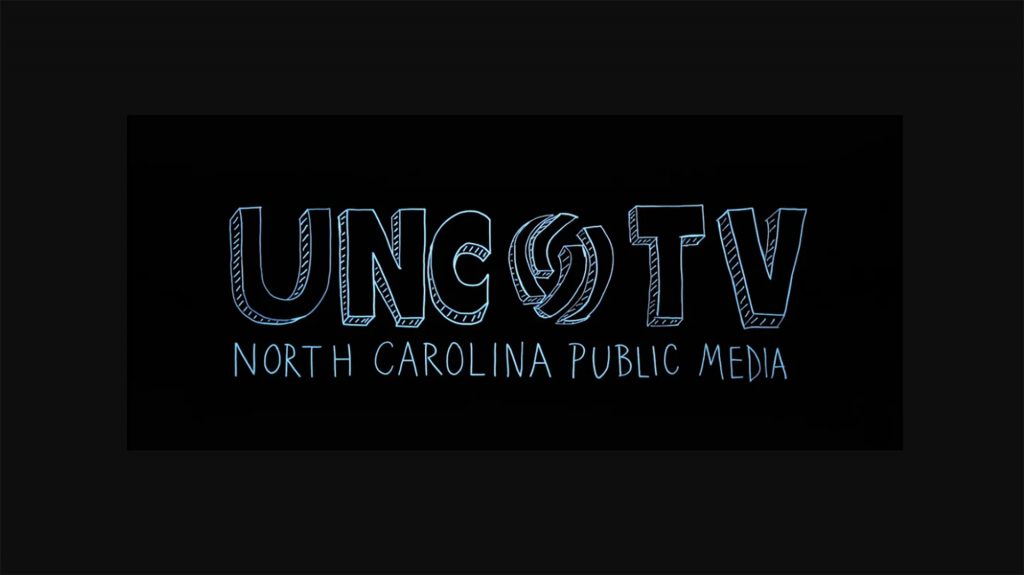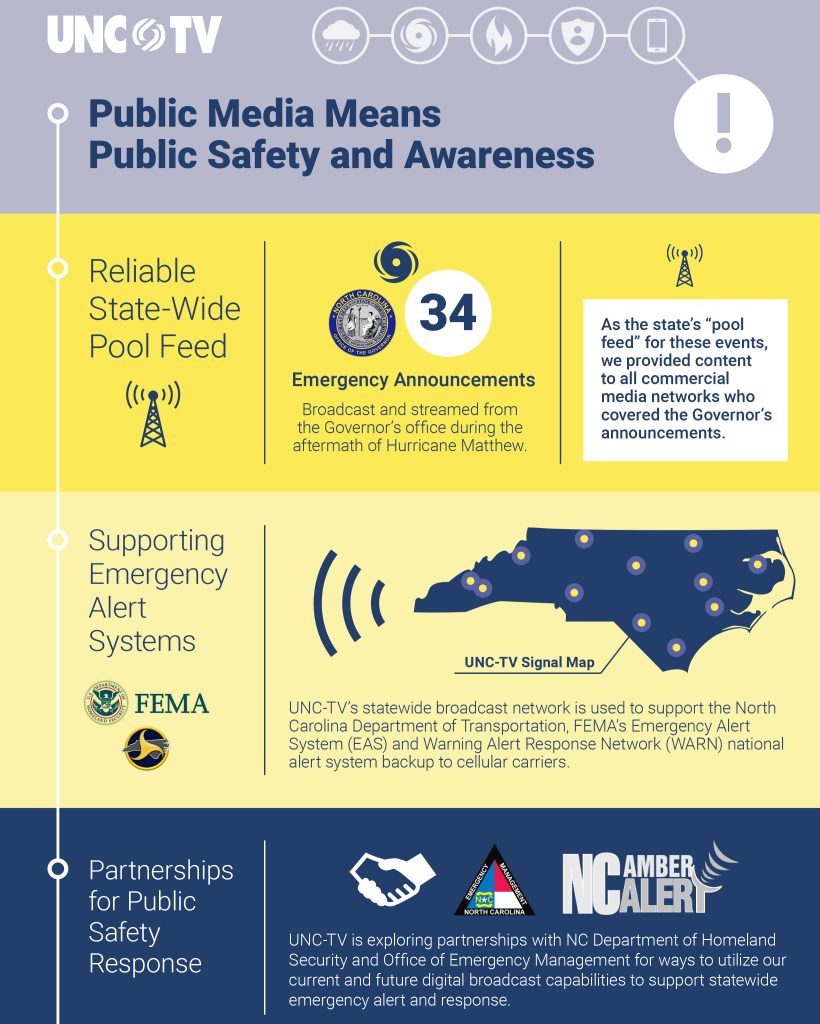
Most people take transmission towers and antennas and over-the-air TV for granted — if they don’t dismiss them altogether as yesterday’s news. But a small team at North Carolina’s statewide public-television network UNC-TV is working on a bold idea that — if it works — would use the latest broadcast technology as a cutting-edge, high-speed way to transmit emergency alerts. The ongoing experiments are a lesson in collaborative innovation. “We’ve had a lot of ‘Holy Cow’ moments about this,” says Fred Engel, head of technology for UNC-TV. “If this gets deployed, it could save lives.”
About 2 ½ years ago, public-safety officials in North Carolina came to UNC-TV for help in addressing a critical problem: the antiquated technology and patchwork system 911 dispatchers use to alert first responders like firefighters and EMS teams. In a large majority of cases, emergencies are transmitted as voice messages over analog pagers, which means precious seconds — and a precious many seconds — can be lost while responders wait for critical details. And meanwhile, other, potentially more urgent calls stack up behind, sometimes for as long as 8 minutes, according to Engel.
The bold idea is to use the still-nascent broadcast standard known as ATSC 3.0 (or Next Gen TV) to send vital alerts at more than 1000 times the speed, supplemented by essential information to help responders respond more effectively. The new standard, which is designed to work with a broadcast signal and an internet connection, is so much more efficient in transmitting high-quality video and audio that it leaves bandwidth for sophisticated ‘datacasting’ — signals that go much farther and much faster than the current system and can reach mobile targets in milliseconds, obviously crucial for first responders. “Datacasting used to be a solution looking for a problem,” says Engel. But if he and his collaborators are right, not any more. “Putting our massive tall-tower high-power technology in the service of public safety is a no brainer.”

UNC-TV’s proposal to create a private channel for first responders using the new standard won first prize in the NAB Pilot Innovation Challenge in 2017. Since then, Engel and his colleagues have successfully set up a connection with a 911 dispatch center, converted its data to text, and successfully routed the messages through an ATSC 3.0 transmitter. As luck would have it, there was one nearby: UNC-TV often collaborates with innovation powerhouse WRAL-TV, the independently owned NBC affiliate in Raleigh, which in June of 2016 became the first station in the country to light up an ATSC 3.0 experimental transmitter.

“We have yet to see a reason why it won’t work,” Engel says, but there’s still a lot to do, such as coming up with the right device for the first responders to receive the more efficient signals. The team of public broadcasters and public-safety officials is moving deliberately and methodically, testing each hypothesis before moving on to the next experiment. Engel, sounding like the engineer he is, measures his words carefully. “We know we can do a lot of things, but we don’t know the limits of what we can do,” he says. “We want to prove and understand what the capabilities and the limits are. We don’t want to promise anything that we can’t deliver.”
When will ATSC 3.0 be widely available? Our home base of Phoenix is a “model market” where multiple broadcasters have banded together to deploy the new technology. However, because adoption of ATSC 3.0 is voluntary, it will be years before consumers see the new technology’s full potential in their homes (or news directors in their newsrooms. And separate research is underway to deliver emergency alerts and information more effectively to individuals.
But UNC-TV and its collaborators illustrate what can happen when a strong mission, an entrepreneurial spirit, and the patience to test and iterate combine to drive meaningful change. This time, the stakes couldn’t be higher. As Engel puts it: “It’s great to have great ideas — but in the public safety area, your great ideas better work.”
[NOTE: The Knight Foundation, which co-sponsors the NAB Pilot Innovation Challenge, also funds our work at the Lab.]
Get the Lab Report: The most important stories delivered to your inbox